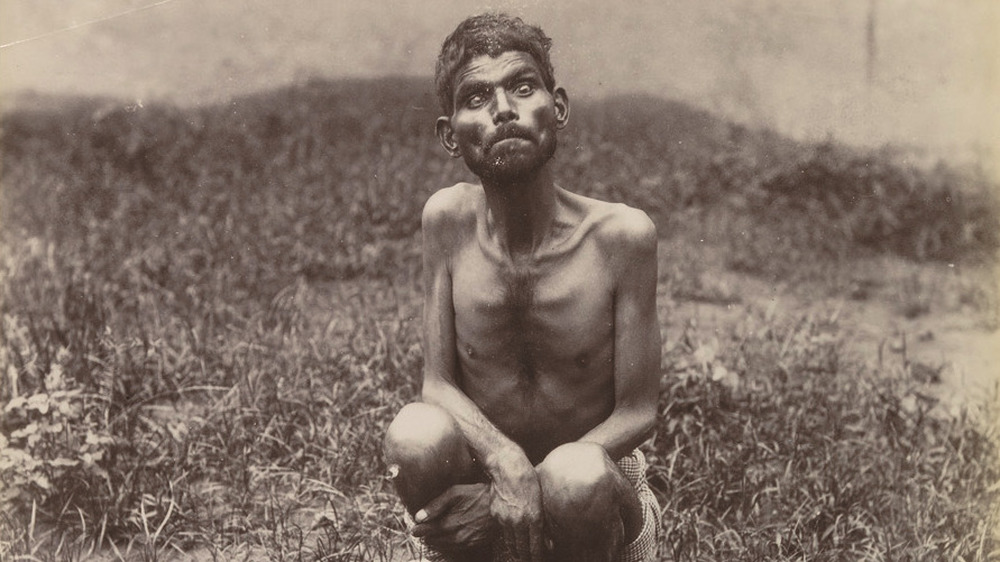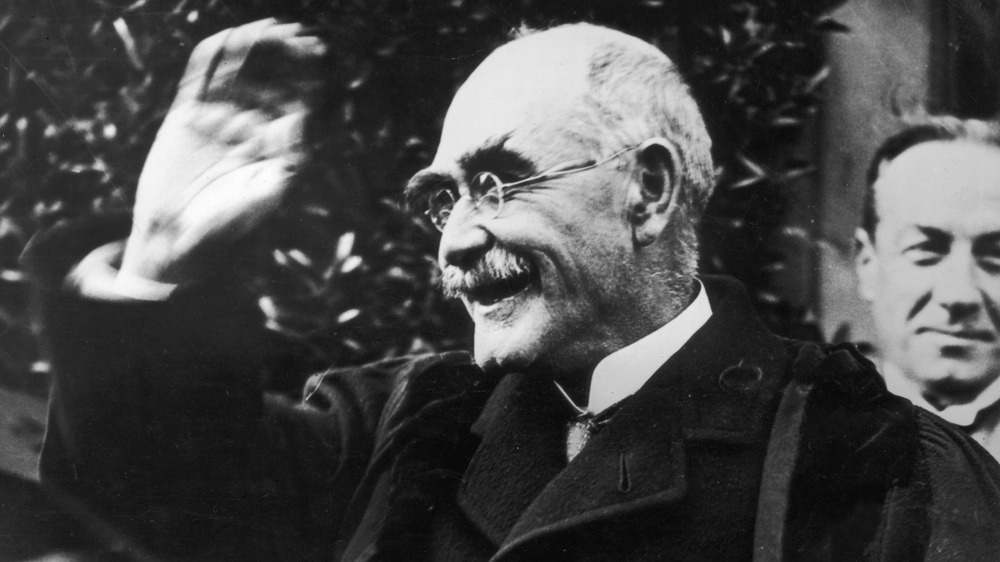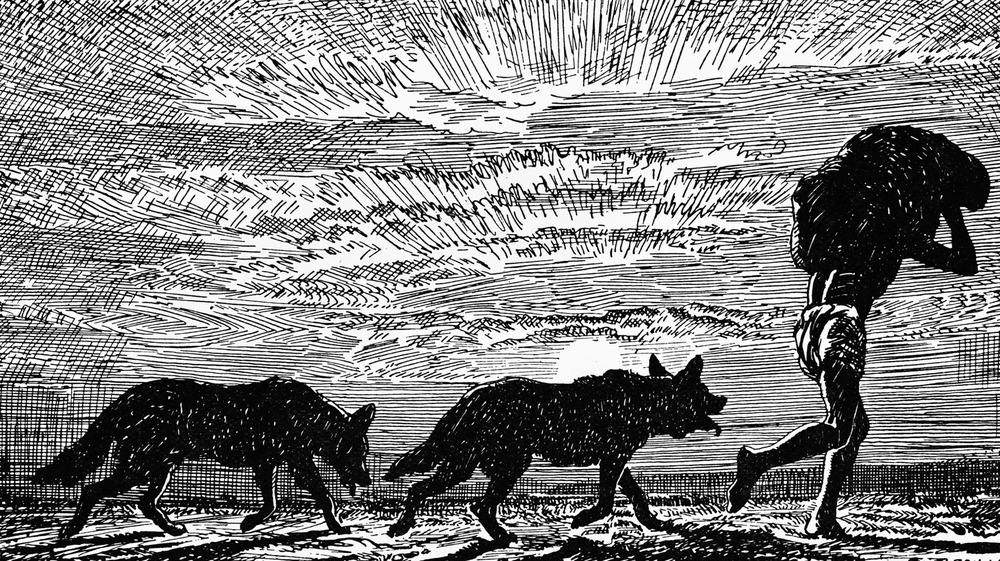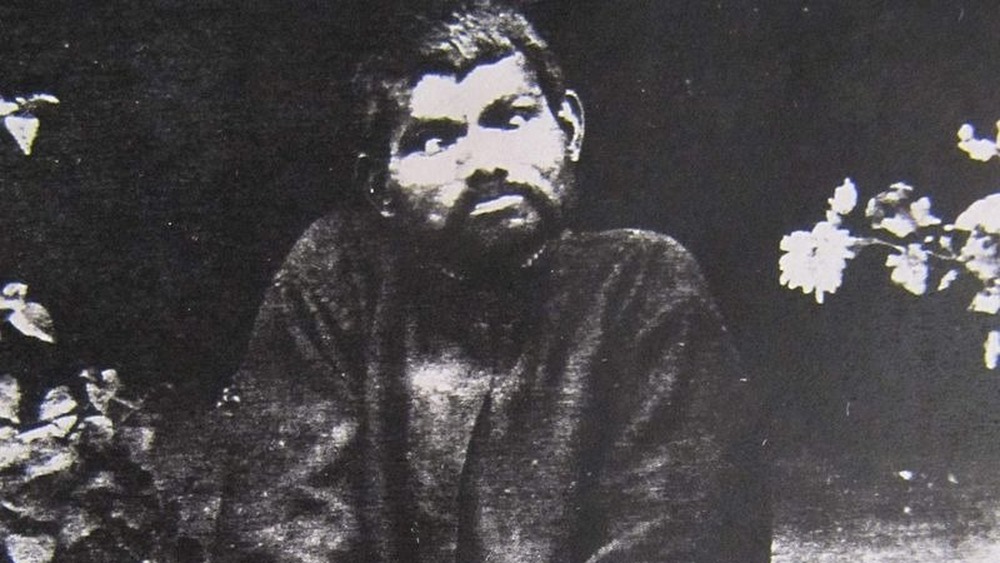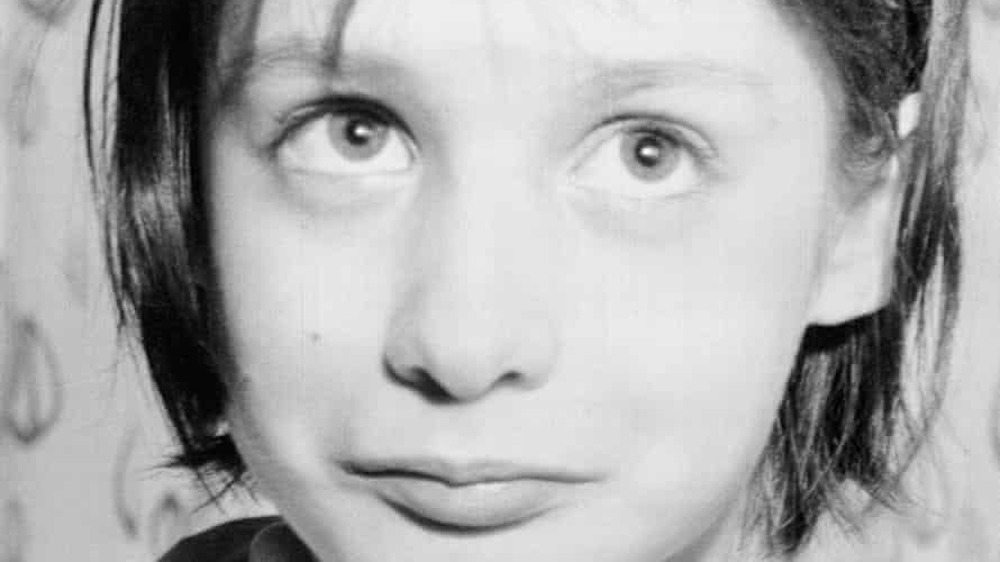The Tragic Story That Inspired Mowgli From The Jungle Book
Long before 2018's Mowgli graced the screen and followed the life of a child raised by wolves in the jungles of India, the story of the eponymous Mowgli had been a classic for decades. A story of survival against all odds (and a man-eating tiger by the name of Shere Khan), Rudyard Kipling's 1894 collection of connected stories The Jungle Book chronicled the life of the feral child named Mowgli (as well as other characters such as the mongoose Rikki-Tikki-Tavi) in a way that resonated with children and adults alike.
And while the thought of a child raised by wolves may sound like a fanciful creation straight from the mind of Kipling, there is more to the tale than the creative desire of the writer to tell a good story. In fact, it is said that the character of Mowgli is based on a real person, a boy who was found by hunters and who, for the rest of his life, struggled to fit into the society he knew nothing about. The story of the real-life Mowgli, though, does not have quite the same ending as that of the fictionalized version. His, instead, is a tale of hardship seemingly from beginning to end.
The boy most assume Kipling based Mowgli of The Jungle Book on was named Dina Sanichar
Historians and scholars agree that the character Mowgli of The Jungle Book was based on a real human being who lived in India in the 1800s. According to History, it was on a Saturday in 1867 that a band of hunters found what they originally thought was a wild animal sleeping in a cave in the area now known as Uttar Pradesh in India. It was, in fact, not a wild animal but a child. The hunters could not coax the child out, so instead, they smoked him out and turned him over to an orphanage. Upon arrival, he was given the name Dina Sanichar. ("Sanichar" means "Saturday" in Hindi.)
Known as "Wolf Boy," Sanichar is said to have been living with a pack of wolves at the time of discovery. (A female wolf was killed by the hunters before they took Sanichar back to civilization.) He walked on all fours (something that he eventually stopped doing) and engaged in other habits befitting wolves, such as growling and grunting. This was the beginning of a long and arduous journey for Sanichar, as the people at the orphanage would spend years attempting to reintegrate the "Wolf Boy" back into society.
Kipling never actually met the 'real' Mowgli of The Jungle Book
Before we get more into Dina Sanichar's unfortunate time back in civilization, it's important to look at the author of The Jungle Book and his connection to the boy. Born in the British-ruled subdivision of Bombay known as the Bombay Presidency of British India in 1865, Joseph Rudyard Kipling spent his first six years in India before leaving for England for schooling. He returned as a 16-year-old and spent the next several years living and working in India before returning to London and eventually settling in the United States with his wife, Caroline "Carrie" Balestier. It was here, at their Vermont home (which they named "Naulakha," — Hindi for "jewel beyond price") that he would write what would become his most famous book, The Jungle Book.
Despite spending a fair amount of his life in India, though, Kipling never had contact with Sanichar. Kipling is said to have used the work of Sir William Henry Sleeman as his basis for the character Mowgli. (Sleeman documented accounts of six feral children in his book A Journey Through the Kingdom of Oude in 1848 – 1850.) In fact, Biography writes that Kipling never even visited the jungle that he based The Jungle Book on, known as the Seoni jungle (spelled Seonnee at the time). Kipling is said to have used photographs captured by his friends Aleck and Edmonia Hill and the writings of Robert Armitage Sterndale for inspiration while creating his legendary tome.
When the man who served as the inspiration for Mowgli was found, he was considered an 'idiot'
Not surprisingly, when he was found, Dina Sanichar did not speak in words. Instead, Robert M. Zingg writes in his 1940 American Journal of Psychology article "Feral Man and Extreme Cases of Isolation," he communicated in a variety of growling and grunting sounds. Because he didn't speak in words, he was considered an idiot – a derogatory term that was once used to describe those with intellectual disabilities — upon arrival at the orphanage. From the point of his arrival at the orphanage until his death, the staff worked with him to try to get him to speak.
Despite many years of attempting this task, Sanichar never learned to talk. It seems that the years spent in the jungle had altered his learning patterns, and whether he was able to or not, Sanichar never conversed with people. Outside of the increased freedom he might have gotten if he'd been able to communicate his needs and wants to his guardians, an inability to communicate in words prevented people from learning his history and the circumstances that led to him being found in a cave by hunters.
Sanichar ate raw meat and sharpened his teeth on bones
Adjusting to society and the usual machinations of daily life was, needless to say, difficult for Dina Sanichar. Things that we take for granted like walking upright, wearing clothing, and, of course, speaking were foreign concepts that the staff of the orphanage desperately tried to teach Sanichar. Another concept that would have been foreign to the young boy — and another task that the staff of the orphanage faced — was teaching Sanichar to eat like a human being.
When he arrived at the orphanage, Sanichar only ate raw meat (a logical meal given his upbringing). According to Lane DeGregory, writing for Floridian, missionaries were faced with the gargantuan task of trying to get Sanichar to eat cooked food. This task, in the end, was barely accomplished. For the remainder of his time in the orphanage, Sanichar continued to prefer eating raw meat, even though he did eventually eat some cooked food. To add to that, his time in the wild with the wolves taught him another activity that he continued while back in civilization: Sanichar would gnaw on bones to sharpen his teeth.
Sanichar's best friend after leaving the jungle was another feral child
Despite living there for almost two decades, Dina Sanichar, inspiration for Mowgli from The Jungle Book, was said to only have one true friend at the orphanage — another feral child who had been brought there five years after Sanichar. The bond must have been an instinctual one, as Sanichar — who was older than the newly found feral boy — took on a role similar to what might be considered an older brother and taught the younger boy to drink from a cup, according to M. Miles in his article "Disability Care & Education in 19th Century India."
This part of the story, though, does not have a happy ending. The younger boy spent around four months total at the orphanage, and in that time, he tried to run back to the forest multiple times. Then the boy died. For the remainder of his time at the orphanage, there are no more references to any sort of familial or friendly relationships created or maintained by Sanichar, meaning he not only spent the first part of his life in isolation, but in reality, Sanichar spent the entirety of his life alone.
The man who inspired The Jungle Book never truly integrated into society
Having spent some of the most formative years of his life living with a pack of wolves in the wild (though it is not known at what age he first started living with wolves), it may come as no shock that during his time in the orphanage until his death, Dina Sanichar did not fully reintegrate into society. While authorities were able to teach Sanichar to eat cooked food, to walk upright, and, eventually, to wear clothes (even if all of these activities were undertaken begrudgingly), these were some of the very limited number of things that he did eventually learn to do, according to Robert Zingg's article.
While it is not recorded whether or not Sanichar tried to escape the orphanage like the only friend he made, it was, however, written down that in order to get him to do anything, he needed constant supervision. These behaviors would continue for the rest of his life, and while Sanichar was allowed to roam the grounds of the orphanage, he was never allowed to leave the property.
Sanichar, inspiration for The Jungle Book, developed a smoking habit
While Dina Sanichar gnawed on bones and did not communicate in words, he did develop one human habit during his time attempting to live in late 1800s Indian society: smoking cigarettes. Of all of the possible human behaviors that Sanichar could have developed, this was perhaps one of the most harmful — and one that is said to possibly be linked to his demise.
During his time at the orphanage, Sanichar rejected most human conventions, except tobacco, according to Zingg. It can be assumed that, after seeing people around him smoking, he eventually tried it. Upon trying cigarettes for the first time, it can also be assumed that the mood-altering effects of nicotine — the buzz people feel due to the release of epinephrine — likely helped Sanichar feel slightly better considering the isolation, depression, anxiety, and other things he suffered through on a daily basis (with no way to effectively communicate his pains or frustrations).
Sanichar died of tuberculosis in 1895
An infectious disease that was once known as consumption (and also once thought to be caused by vampires), tuberculosis has wreaked havoc around the world since ancient times. Tuberculosis affects the lungs and was a leading cause of death until the 20th century, when antibiotics were invented. It didn't matter where you were — chances are if you lived in any point in history, you had a chance of contracting tuberculosis, especially if your living conditions were not ideal. (And outside of royalty or the extremely rich, what conditions were ideal for much of history?)
India Today says that Dina Sanichar died of tuberculosis at the age of just 29. While tuberculosis was certainly a highly deadly global issue, some also point to his smoking habit as an aggravating factor causing him to contract tuberculosis. At the time of his death, Sanichar had never spoken, he barely ate like the rest of society around him, and he'd made very little progress in other societal norms of the time, capping off what must have been a sad, depressing existence after his removal from the wild.
Sanichar was not the only child allegedly raised by wolves
Dina Sanichar, inspiration for The Jungle Book, was not the only child said to be raised by wolves. Throughout history, there have been records of children raised by wolves, as well as other wild animals. In fact, the story of children raised by wolves can be traced back to the founding of Rome, even. In mythology, Romulus and Remus, the brothers who are said to have founded the great city, were raised by wolves. And while theirs is a story meant to simply explain the founding of Rome, there have been plenty of children who have actually been raised by wild animals.
Take Victor of Aveyron, for example. Found near Paris in the 1800s, the boy who would be named Victor was taken in by a doctor, who then undertook the task of trying to integrate him into society for the next five years. More recently (in the 1950s), there was Marcus Rodríguez Pantoja, who claims that after he was abandoned as a child, he spent over a decade living in isolation in the wilderness of Southern Spain, according to The Guardian. It was there, he says, that he was raised by wolves before being found by police and reintegrated into society, where he still lives to this day (despite certain hardships he faces 60 years since his return).
Feral children have been documented in the United States
Jungles or forests are not the only places that can produce feral children. The most important determining factor is connection with society. Take the case of the child named "Genie," for example. Her case came to light in the 1970s in California, but she was still considered a feral child.
Discovered by officials after her mother brought her into a welfare office seeking help, Genie was found to be severely malnourished, unable to talk, and also incontinent. While she looked to be six or seven years old, she was actually 13 at the time. Authorities found out that her father had kept her strapped to a chair from a very young age. She was not allowed to make any sort of noise (not even crying), and if she did, she was severely beaten for it. Genie became a ward of the state, and she spent decades in various institutions and foster homes. Over time, the interest in Genie and her case diminished, and she faded into the background. As far as most can tell, Genie is still alive today but is unreachable even to the linguist who worked with her for years, according to ABC News.

